Citizen science programs have popped up across the United States, focusing on connecting local communities with nearby water resources and building a trustworthy data pool over the sampling period. While commonly utilized as a means of ensuring that large watersheds or lake regions are adequately sampled, the credibility and success of such programs have been called into question.
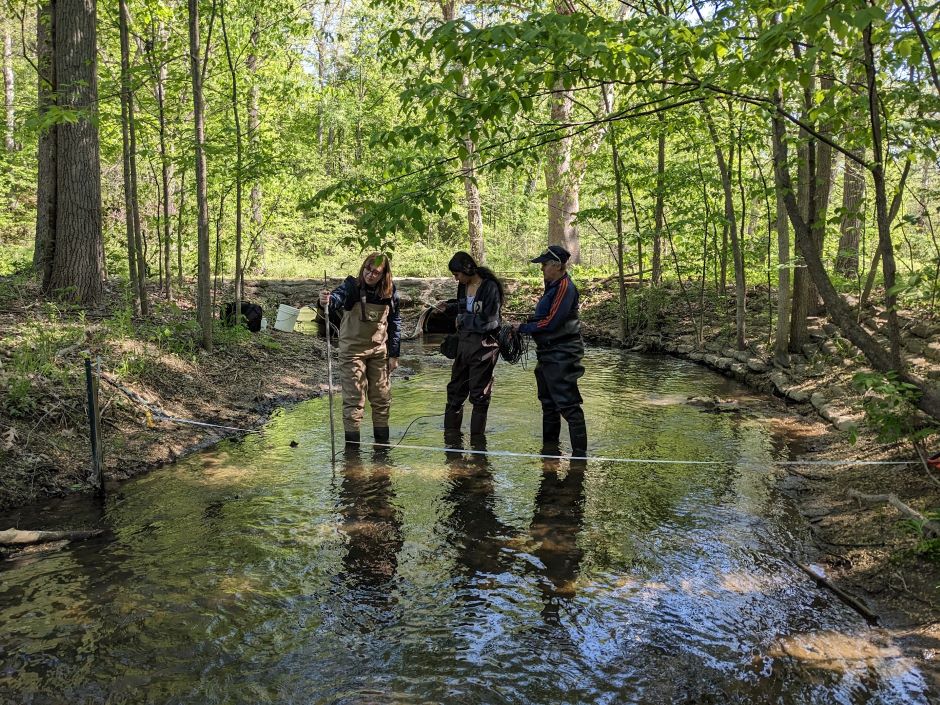
HRWC volunteers measure stream velocity across a subsection of Woods Creek, a tributary of the Huron River near Belleville, Michigan. Stream velocity measurements can be combined with water level measurements to calculate stream flow and chemical parameter loads. (Credit: HRWC)
Max Herzog, Deputy Director of Programs and Partnerships with the Cleveland Water Alliance (CWA), oversees the Lake Erie Volunteer Science Network (LEVSN) and knows all too well how citizen science initiatives are viewed.
In particular, LEVSN being a regional initiative of Lake Erie non-profits and semi-governmental organizations, naysayers believed that the program couldn’t collect meaningful and actionable data about water resources.
“The goal of LEVSN was really to figure out what it would mean for these very locally focused groups to collaborate at the regional level, and if that was something that was possible,” states Herzog.
The establishment of LEVSN was catalyzed by an investment from a collaboration of community foundations called the Great Lakes One Water partnership.
Herzog explains, “The Great Lakes One Water Partnership came together around this idea that their individual communities care about their Great Lake, and typically the foundations only invest in the local community. But what if they could come together to make more of a regional investment to enable that regional impact?”
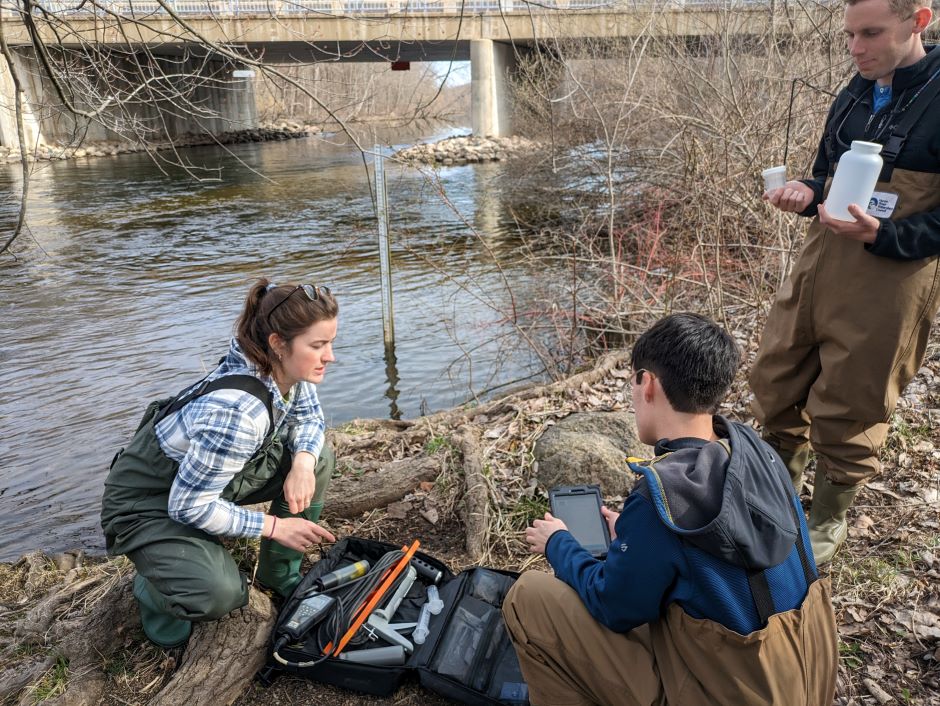

Kelly McCabe, coordinator of the HRWC Volunteer Chemistry and Flow Monitoring Program, trains intern, Alex Gonzalez, and a volunteer on sampling procedures along the banks of the Huron River north of Dexter, Michigan. (Credit: HRWC)
Impacts of Regional Collaboration: Building Community and Standardizing Citizen Science Initiatives
LEVSN leverages the local investment to have regional impacts, building a dataset that includes data from a variety of groups that neighbor Lake Erie. This regional approach with a local lens connects stakeholders and provides tools to groups that are interested in monitoring their local resources but otherwise may not be able to access the necessary tools and training.
In addition to the equipment, standardization of sampling and data analysis can go a long way in creating reliable and accurate results that can be utilized throughout the watershed. The Huron River Watershed Council (HRWC) took on a large part of the responsibility in helping to develop these standards.
“Our group has been a big part of helping to develop those standards and help to work on some of the standard operating procedures and protocols that Max and others have helped put together,” explains Kelly McCabe, Coordinator of HRWC’s volunteer Chemistry and Flow Monitoring Program.
Not only do these standards improve the credibility of the data collected as part of these citizen science programs, but the data is also comparable and integratable among organizations in LEVSN. The data collected also helps fill in critical knowledge gaps in the region.
Herzog expands, “The data collected by Huron River Watershed Council in Ann Arbor can be put into the same data set that is collected by Buffalo Niagara Waterkeeper at the other end of the lake, and we can start to build a data set that actually includes data from watersheds all around the Lake Erie Basin.”
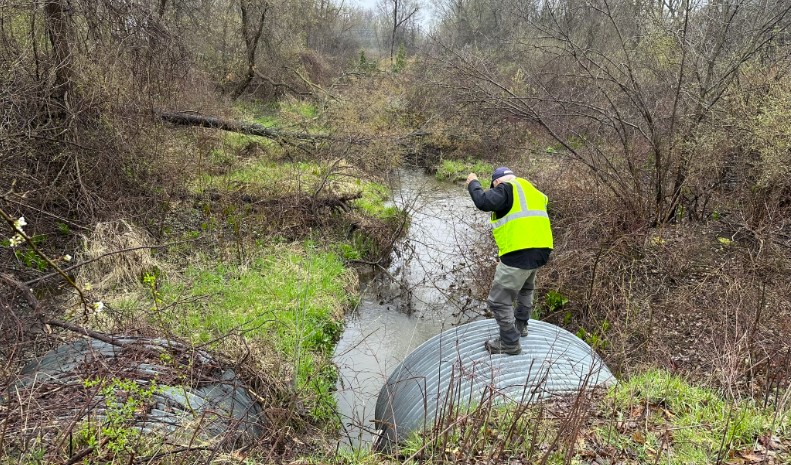

HRWC’s volunteer lowers the YSI probes into Davis Creek, a tributary in the upper section of the Huron River Watershed, off a culvert to record the LEVSN core water quality parameters of pH, dissolved oxygen, water temperature, and conductivity data. (Credit: HRWC)
“Our volunteer program has been monitoring water quality for 22 years, and has developed a pretty sustainable model, but there are a lot of other groups that want to do this type of monitoring, and there isn’t always funding and support available. So LEVSN is a really great opportunity for organizations to come together and support one another and work to create this larger, credible data set,” adds McCabe.
When selecting equipment, reliability, accuracy, and credibility were at the forefront of considerations. While several brands were tested, the CWA decided to purchase several YSI ProQuatro and YSI ProDSS units for the network.
YSI was chosen as a local business because the brand name is easily recognized in scientific circles. Fondriest was chosen as the distributor due to the customer service and ease of being able to go to the office and pick up equipment.
While the HRWC’s monitoring program has been around for many years, other groups in the network are much newer and benefit from the standards that more established groups have curated. Additionally, the CWA manages the network’s instrumentation, leasing the YSI meters to other groups in LEVSN.
“We are using the same instruments that state EPA or federal EPA might use, and we have worked together to create this very robust approach for how we manage and analyze the data,” states Herzog.
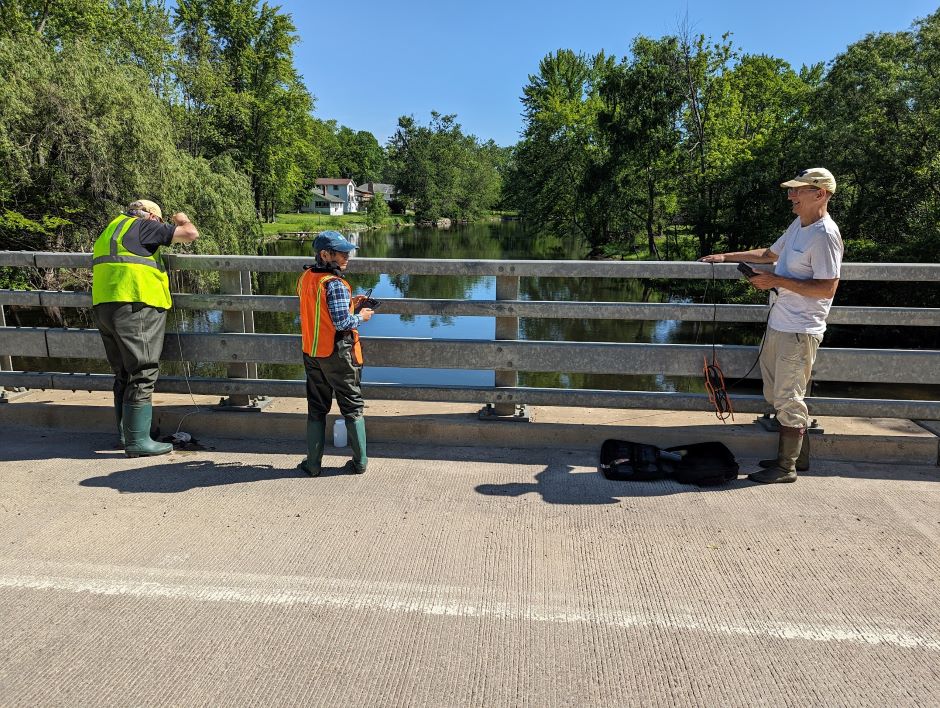

Three experienced HRWC Chemistry and Flow Monitoring volunteers work together to record YSI parameter data and collect additional water samples by lowering a Van Dorn Sampler into the main stem of the Huron River off a road overpass south of Brighton, Michigan. (Credit: HRWC)
Citizen Science Funded by Regional Dedication to Water Resources
LEVSN is just one part of the larger Smart Lake Erie Watershed initiative led by the CWA and improves water quality monitoring efforts across the basin by working with over 18 collaborators who are all invested in improving the health of the lake.
When discussions surrounding the creation of a regional citizen science network first started in 2019, there were several concerns raised that such programs can only be successful if participants are paid. For the first three years, grant funding sponsored LEVSN and the networks that participated–when the grant ended, LEVSN only grew in size.
“I think a huge proving point for me was when we transitioned to an unfunded program, and nearly all of our groups stayed and new groups joined that were never compensated to participate. And I think that is a huge proof point that what we’ve built with the network is of tremendous value to the communities that participate,” states Herzog.
McCabe adds, “I think having that support for one another is super valuable, especially for groups that are starting out and even for our group. It’s so great to have the community and be able to ask questions and think through problems together.”
Collaboration among LEVSN participants is built off of dedication to Lake Erie and viewing the basin as a whole, not just locally. Each group is seen as a partner in the larger network and is connected by shared standards and multi-agency support.
According to McCabe, even older organizations like HRWC benefit from leasing water quality instruments from the CWA and being able to work with other LEVSN members to solve problems and respond to shared issues they’re noticing in their watershed.
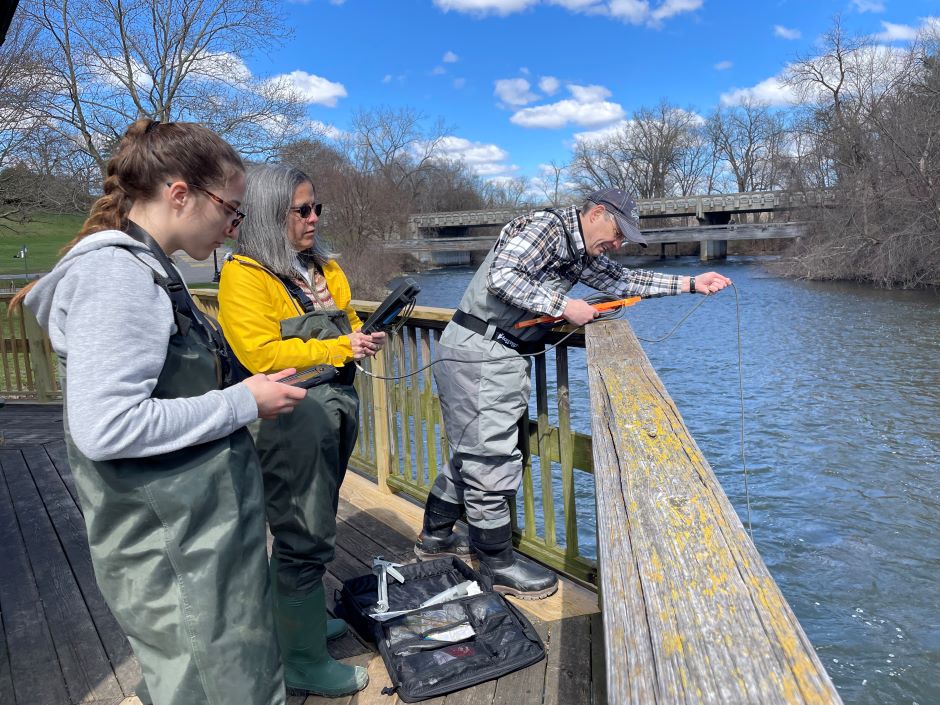

HRWC Chemistry and Flow volunteers lower the YSI ProQuatro probes into the main stem of the Huron River near downtown Ypsilanti, Michigan to record the LEVSN core parameters of pH, dissolved oxygen, water temperature, and conductivity. (Credit: HRWC)
Regional Collaboration Contributes to Local Results
Ultimately, this shared mission and collaborative spirit is what makes LEVSN successful and improves local monitoring programs as well. Being able to share instruments makes more expensive monitoring tools accessible for groups that receive limited funds.
“The collection of water quality data is really valuable for local level environmental action and decision making,” states McCabe.
Herzog adds, “I think while the data alone is really valuable to the individual communities, I think that our publications and our shared data set that we’re building enhance the credibility and value of the data.”
Being able to work collaboratively with groups that are equally invested in Lake Erie helps improve resource management and environmental decision-making. Seeing shared issues and being able to work together to come up with solutions is one of the greatest draws of LEVSN.








Leave a Comment